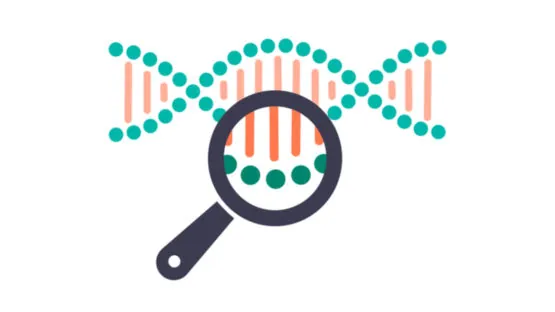Senescent cells are surprisingly hard to identify, but a recent publication in Tissue and Cell makes the case for using cytoplasmic DNA as a marker of senescence.

Read More
What makes a cell senescent?
In order to study the behavior of senescent cells, or to treat them with senolytics or senomorphics, researchers need to know what cells are senescent in the first place. Unfortunately, biology is complex, and identifying senescent cells is a practice riddled with exceptions and inconsistencies, often dependent on things like the cell type or mode of senescence induction.
SA-ß-gal staining is perhaps the most well-known marker of senescence, but it is a notoriously technical stain to conduct appropriately and is questionably effective for certain cell types, such as epithelial cells and neurons. Senescent cells don’t divide, so a lack of replication can be an indicator of senescence. Depending on the cause of senescence, markers such as DNA damage, shortened telomeres, reactive oxidative species (ROS), and/or cell cycle inhibitors, such as p16 or p19, may also be present. Senescent cells often show enlarged morphologies and disrupted nuclei as well. Some senescent cells resist apoptosis through SCAPs, the pathways targeted by the well-known senolytics dasatinib and quercetin (D+Q). Many senescent cells also exhibit the SASP, releasing inflammatory cytokines. Among all of these, only absence of proliferation is accepted as a universal requirement of senescent cells. Further complicating matters, all of these factors may be exhibited by non-senescent cells. For example, quiescent stem cells can be healthy but not actively dividing, and activated immune cells promote inflammation as part of their normal functions [1].
Wayward DNA
DNA exists inside the cell nucleus. Since double-strand DNA breaks and a compromised nuclear membrane are both common characteristics of senescent cells, researchers at the Kunming University of Science and Technology investigated whether double-stranded DNA found outside of the nucleus in the cytoplasm (c-dsDNA) could be a useful marker of senescence [2]. Senescence was induced in mouse embryonic fibroblasts through multiple different methods. Fibroblasts were cultured under high-oxygen conditions to induce oxidative stress. Additional fibroblasts were repetitively passaged under normoxic conditions to induce replicative stress. In the third part of the experiment, fibroblasts received two gene knockouts: telomerase, an enzyme that maintains the length of telomeres, and WRN, a genomic stability protein implicated in Werner Syndrome.
A novel senescence marker
These senescence inducers resulted in enlarged morphology, slowed proliferation, increased SA-ß-gal staining, an increase in the SASP gene MMP12, and an increase in the cell cycle inhibitor p16. In addition, c-dsDNA was found to be increased significantly in all three parts of this experiment. The authors suggest the c-dsDNA signals were more sensitive then more traditional markers of senescence. In particular, SA-ß-gal could not detect differences in senescence in the oxidative stress condition, and MMP12 was not increased by replicative stress. However, c-dsDNA was found to be significantly increased under both of these conditions. The authors also investigated some mechanisms by which c-dsDNA may trigger the SASP. The c-dsDNA was detected by AIM2 in oxidatively stressed fibroblasts, triggering the pyroptosis pathway to an extent that increased inflammation but did not result in apoptosis.
We propose that cytosolic dsDNA might be a highly sensitive biomarker for different types of MEF senescence, particularly for cases in which SA-ß-Gal activity fails to properly discriminate pre-senescent cells. Senescence-related cytosolic dsDNA may induce significant pyroptosis activation in oxidative-induced pre-senescent MEFs, providing experimental evidence for inflammageing.
Conclusion
There are multiple issues with SA-ß-gal staining that make it a less-than-ideal marker as the “gold standard” identifier of senescent cells. c-dsDNA as a marker may help bring clarity to what cells are truly senescent and may also be useful as an aging marker beyond simple senescence. However, whether it also marks senescence in other cell types, in other species, in other modes of inducing senescence, and in vivo is not yet known. This study did not investigate if any population of non-senescent cells may exhibit c-dsDNA or if any senescent cell populations might be possible without exhibiting c-dsDNA.
The more that is uncovered about the behavior of senescent cells, the more effectively researchers can develop therapies to promote longevity. The complexity and heterogeneity of senescent cells, while providing endless fodder for scientific debates surrounding what makes a cell senescent, also provides a therapeutic opportunity to more specifically target senescent cells.
Literature
[1] Gillispie, G.J., Sah, E., Krishnamurthy, S., Ahmidouch, M.Y., Zhang, B., & Orr, M.E. (2021). Evidence of the cellular senescence stress response in mitotically active brain cells – implications for cancer and neurodegeneration. Life, 11:153. https://doi.org/10.3390/life11020153
[2] Zhou, R., Xie, X., Qin, Z., Li, X., Liu, J., Li, H., Zheng, Q., & Luo, Y. (2021). Cytostolic dsDNA is a novel senescence marker associated with pyroptosis activation. Tissue and Cell, 72:101554. https://doi.org/10.1016/j.tice.2021.101554




